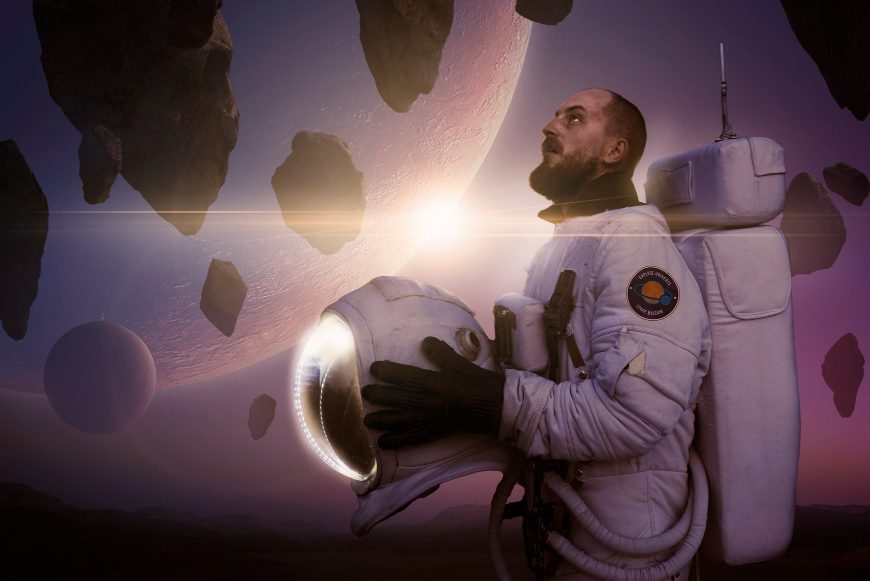The need to engineer spacecraft and equipment that could withstand harsh cosmic conditions sparked innovations in lightweight yet durable materials, advanced insulation systems, high-efficiency solar cells, and compact computing hardware that ultimately trickled down into products now taken for granted.
Consider for a moment the materials we encounter every day: memory foam mattresses, which were originally designed to cushion astronauts against the shocks of takeoff and landing, or scratch-resistant lenses that emerged from the demands of helmet visors surviving the abrasive conditions of space. Even the handheld infrared thermometers widely used during global health crises owe their practicality to sensing technologies that began as tools to measure spacecraft heat signatures. Wireless headsets trace roots back to mission control communications, and modern air and water filtration technologies—vital in spacecraft life-support systems—have been translated into affordable purification systems now deployed in regions facing water scarcity.
These examples are visible reminders, but an even bigger story lies in the satellites orbiting quietly above us. Satellite systems, developed as tools for Earth observation and mission support, now serve billions of people who depend on accurate weather forecasts, precision agriculture, global mapping, GPS navigation, and disaster response alerts that save countless lives each year. What was once designed to guide spacecraft safely has become the invisible infrastructure guiding children to schools, ships to ports, and farmers to optimize crop yields.
In this sense, the line between outer-space invention and daily-life convenience disappears until one can no longer say where one ends and the other begins. Space exploration ceases to be a distant, abstract endeavor—its presence instead becomes felt with every navigated journey, every weather announcement, and every sip of safe drinking water.
The most profound of these shifts is captured in the so-called “overview effect,” the transformative experience many astronauts describe when seeing Earth from above: a fragile blue sphere suspended in an expanse of darkness, without borders or divisions. This perspective, while directly experienced by only a few, has cascaded into cultural awareness worldwide. Humanity’s image of Earth as unified and vulnerable has inspired environmentalism, strengthened calls for global cooperation, and reshaped our moral outlook on resource use and sustainability.
In everyday life, this philosophical transformation manifests in choices that may seem small in isolation—recycling plastics, reducing waste, supporting clean energy policies, or contributing to community initiatives aimed at protecting local ecosystems. Yet together, these seemingly minor decisions embrace the planetary awareness brought forth by a spacefaring perspective. It is not merely about being inspired by astronauts’ words; it is about reimagining oneself as a participant in a shared story of planetary stewardship.
Beyond environmental awareness, space exploration has altered our perception of human potential. Landing on the Moon in 1969 once seemed unthinkable, as does the concept of colonizing Mars today. Yet each achievement serves as both a reminder and a challenge: boundaries are only temporary, and innovation makes the impossible possible. This spirit affects how ordinary people pursue education, dream of careers, and push innovation in fields that may never launch a rocket but still echo the pioneering spirit of exploration.
Teachers, parents, and leaders cite stories of planetary exploration to encourage curiosity in young learners, striking a chord that resonates well beyond classrooms and laboratories. The inspiration from space is not limited to STEM disciplines—it fuels artists, writers, and entrepreneurs who translate the ethos of discovery into entirely new domains. In everyday reality, space exploration does not just expand the edges of technology but reshapes ambition itself, making boldness and imagination staples of daily living.
The trajectory of innovations now being tested for off-world survival almost guarantees their adoption at home. Medical monitoring technologies designed for months-long space missions are informing advanced telemedicine solutions, enabling doctors to track vital signs of patients in remote or underserved regions. Agriculture experiments aboard spacecraft and in simulated Martian habitats—where crops must thrive in resource-limited environments—are directly paving the way for techniques that address looming concerns of food scarcity amid global climate change.
Meanwhile, commercial enterprises entering the space sector are redefining cultural and economic boundaries. The idea of space tourism, once science fiction, provokes critical questions: How will human access beyond Earth be regulated? What legal frameworks will govern extraterrestrial mining? Will space become a new shared frontier, or another arena for competition and inequality? These are not abstract musings but deeply practical questions that filter into Earth-bound law, international relations, and cultural imagination.
For children growing up today, the space industry is less about impossibilities and more about career paths, entrepreneurial ventures, and everyday expectations. A child might grow up fully accustomed to hearing about astronauts preparing to live on the Moon or private spacecraft ferrying tourists to orbit. This normalization of space as part of life will alter the cultural landscape, redefining what it means to dream “big” when “beyond Earth” becomes part of the ordinary.
Ultimately, the reshaping of everyday life by space exploration is not a singular shift but an evolving dialogue between the challenges posed above and the responses enacted below. From water in our kitchens, to the apps on our phones, to the inspiration that stirs our imagination, space exploration is quietly embedded within the human story of daily existence. In this ongoing conversation, what humanity dreams of beyond the stars consistently cycles back to transform how we live here on Earth, ensuring that the extraordinary will always walk hand in hand with the ordinary.








